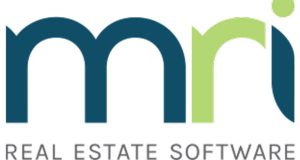 David Fathers, Regional General Manager at Crown Records Management says now is the time for FMs to explore the benefits of digital transformation in managing data
David Fathers, Regional General Manager at Crown Records Management says now is the time for FMs to explore the benefits of digital transformation in managing data
After more than a year of working through the COVID-19 pandemic, companies across the UK are realising that digital transformation is more imperative than ever before. Facilities management professionals are faced with a variety of questions around visitor management, remote working, ensuring post-COVID workspaces are safe and compliant – as well as the potential for increased costs of keeping up with new business requirements.
Some have been putting off the digitalisation process for years, perhaps out of a misplaced fear that it will be expensive, complicated or disruptive, or potentially even due to resistance to new technologies among employees. However, there is a growing consensus that digital transformation is vital for keeping up with the ‘new normal’ as businesses prepare to welcome employees back to work. Businesses that embrace hybrid working models or phased returns to work, for instance, must now explore ways of keeping track of who is in the building. Compliance with social distancing will continue to be crucial, even as some sense of normality returns.
While specific needs will vary between sectors, the need to store, access and share data easily and securely is common to almost all – especially in an era in which employees are likely to access important documents remotely.
WHAT DOES DIGITAL TRANSFORMATION REALLY MEAN?
A catch-all term, digital transformation means different things to different organisations. It encompasses just about any initiative which uses digitalisation and new technology to improve business processes to better meet the needs of customers and improve profitability.
However, for many FM professionals tasked with this challenge, the key question is: where to start?
Here is a four-step process to help businesses begin their digital journey:
1: Be clear about the business case
Start by asking yourself why you are embarking on the digital transformation process. Be clear about the outcomes you are looking for and what benefits you envisage.
For instance, are you looking for peace of mind from a security and compliance perspective, and do you need helpful insights to make informed decisions regarding future office plans? Digitising people’s credentials and presence enables the facilities management team to have a clear view of not only who is visiting and when, but a review of previous visits and footfall.
Remember, digital transformation can result in significant savings, so the decision is also about return on investment. Utilising workflows, for example, allows manual tasks to be automated, which will free up time for people to apply themselves to other, more cost-effective tasks. Using data analytics modules helps make informed, proactive decisions – without having to spend hours collating the relevant information beforehand. It also ensures you are working with live data and not information that is days or even weeks old. All of this results in staff operating in a more efficient manner.
2: Articulate the vision
What will the future look like for the business, and how do you envisage employees working? For instance, document management offers control and visibility, providing a full audit trail of who has access to documents and data – plus, you can adapt these structures and policies with a few clicks of your mouse.
Be sure to socialise the initiative. A key reason digital transformation projects fail is a lack of understanding around employee readiness, so address the question of technology adoption within the organisation.
Ultimately, you should seek to foster a positive attitude toward digital transformation, where employees feel empowered by technology to perform well in their roles and keep up with the latest guidance. For example, using an ECM platform to both store and share company and COVID policies is an effective way to ensure employees are aware of and adhering to the required policies. Using workflow tools to send reminders to staff members, along with the relevant documentation, ensures that each member has regular visibility of what is required of them.
3: Plan for success
A project plan with clear timelines, owners, accountabilities and success measures is good practice.
Think about the information/data that is being used in the process, and what aspects of the current information/data lifecycle employees find frustrating. Enterprise tools for searching, sharing and consuming information are vital; and ideally, that information will be delivered in a smart and compelling way.
Consider that you may need to weed out duplicate records and unwanted or out-dated information before you start.
Many of the processes around implementing new ways of working will involve collaboration with colleagues or external parties. There will be various discussions, with multiple designs and versions drafted. Having those documented with version control makes the process simple. Being able to share those conversations, versions and decisions with colleagues or external parties to review and make digital notes on will ensure efficiency and compliance.
Step 4: Review and Repeat
Whether this is your first digital transformation project as part of a wider strategy, or whether the journey is complete, ensure that you are able to review the business benefits and assess the return on investment.
If you’ve started in one function and it’s been a success, then consider other key processes such as invoice management, contract management, mailroom, knowledge sharing, or case management. The opportunities to become more digitally enabled are limitless.
Three bonus top tips to make your digital transformation a success:
- Identify a partner that can help you identify the key areas where you’re likely to obtain the quickest return on investment.
- Work with the partner to define a clear business plan to present to senior management.
- Don’t be afraid of asking questions – you must ensure this partner has the technology suite and experience to support you through the design, implementation and go-live processes.





